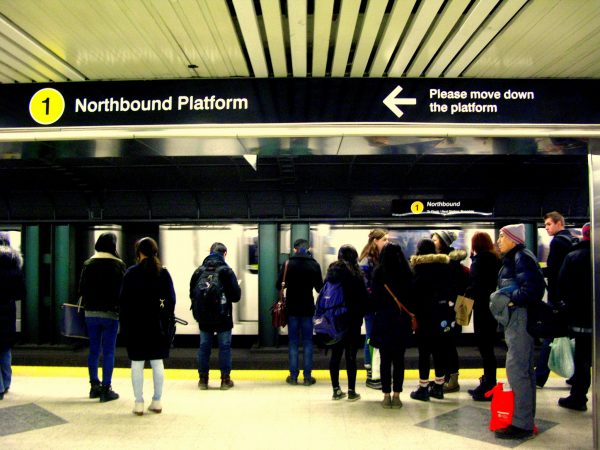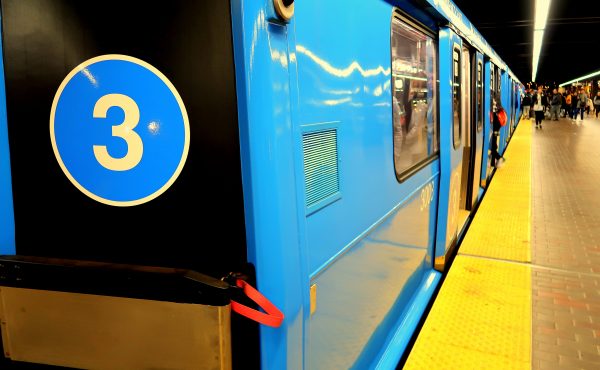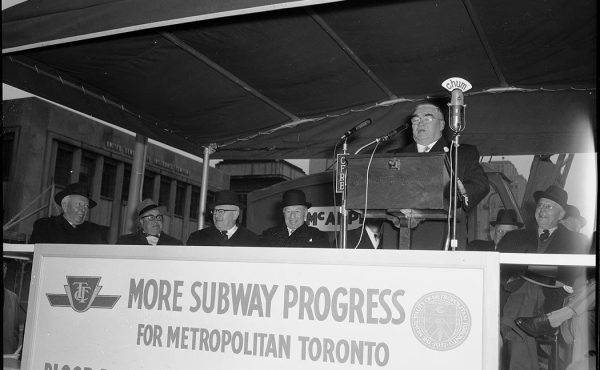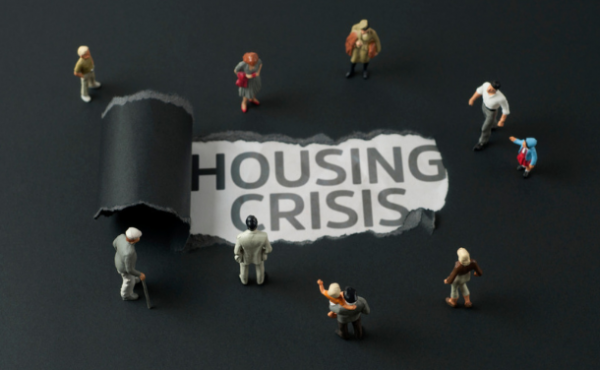There is, in this city, a person going about their business today who will die after being accidentally shoved in front of a moving subway at Yonge and Bloor due to critical over-crowding on the platforms during rush hour.
This looming tragedy is no longer a question of “if.” It is a question of “when.”
Will it be you?
Or, worse, will it be someone you love?
Maybe this soon-to-be dead Torontonian is that good-natured marketing associate who always brings a flat of donuts to the weekly staff meeting. Or perhaps the bright Ryerson engineering student whose parents moved heaven and earth to get to Canada, and upon whose shoulders they have heaped all their dreams.
It’s possible the victim won’t fit so neatly into our pantheon of urban martyrs. He’s the guy down in tech support who never removes his earbuds and makes no effort to know his co-workers. Or that blowhard who (as the day two human interest profiles will gently note), rails ceaselessly about leftist politicians and isn’t shy about his enthusiasm for the Scarborough subway, cost be damned.
Maybe the person lives downtown, but…maybe not. That detail, laden as it is with the full freight of politics, will ricochet through the city like a stray bullet.
Whatever the individual’s back-story, the victim will leave behind the usual collection of parents, nieces and nephews, children, friends, partners and co-workers, all of them sucked into those especially miserable vortexes that swirl around preventable deaths.
One will tearfully tell reporters she texted the person moments before the accident. Another will say he only learned about the horrific scene when it flashed on the lunchroom TV permanently tuned to CP24 and then recalled wondering idly, three hours earlier, why his co-worker wasn’t at their desk.
Everyone not touched directly will feel gross.
This is what we’ll do, as sure as night follows day.
What will our decision-makers do? Will they feel a jabbing pang of hot shame when they learn about what happened? Will they find themselves hurtling back to key moments when they themselves could have altered the path of this fast-moving train, or will they retreat into a heavily fortified cage of self-justification?
Will they blame systems, other governments, voters?
Here are some more questions that come to mind: Will our leaders – and I’m not just talking about those of the municipal variety — attend funerals or place condolence calls to grieving parents? And if they do (though not all will), what could they possibly say to make things right?
I’m old enough to remember when eleven concert-goers were crushed to death in a surging crowd during a Who concert in 1979 in Cincinnati. Tremors and energy can pass through crowds with uncontrollable intensity. We all know that uncomfortable, powerless sensation, especially those who found themselves on those platforms last week.
But let’s also think about other teachable moments that haven’t faded quite so far from view. Exhibit A, of course, would be the Russell Hill subway disaster on August, 11, 1995. At about 6 p.m., two afternoon rush-hour trains collided, killing three, maiming another and injuring dozens more. In the aftermath, a coroner’s inquest identified failing mechanical systems and human error, and served up 236 recommendations that it took the TTC almost twenty years to implement.
One of the legacies was that then-TTC chief general manager David Gunn made it his mission to ensure that so-called “state-of-good-repair” expenditures were always the top of the budgetary pecking order. Indeed, his preoccupation with “SOGR” was such that this approach to prioritizing capital spending is now deeply embedded in the way the city allocates funding.
I certainly have no truck with the animating philosophy, but there’s also a risk, now increasingly manifest, that the City is fighting the last war, as generals do.
The TTC, responding abjectly last week, dutifully implicated incorrect operational choices, while Mayor John Tory reiterated how the new signaling systems now being installed will allow more capacity. Yet these incidents revealed that there is virtually no redundancy left in a system that will only see more crowding in the years to come as new lines, like the Eglinton Crosstown and eventually the Scarborough subway, pump ever more bodies towards this interchange.
Which brings me to the question of what responsible civic leadership looks like in the face of conditions that are already far graver than even the most crowd-hardened commuter realized.
From where I sit, it doesn’t look like the guy who’s currently wearing the chain of office. Tory’s attempts to cast himself, in recent days, as a proponent of a relief line ring hollow, given his stubborn advocacy of a wildly irresponsible subway extension, a wasteful highway reconstruction project and a surface rail scheme that does little but suck energy, time and resources from higher priority projects.
The mayor’s inability or unwillingness to head off deadly problems was on full display over Christmas, of course, with the fiasco about the provision of emergency shelter beds in the worst cold snap in decades.
If you’ve been elected mayor (or premier for that matter), emergency preparedness and crisis management are what you learn on day one of any transition process. But differentiating between partisan goals and steadily worsening conditions isn’t just about knowing how to take a briefing.
As I think about this depressingly intractable situation, I have found myself wondering who has the gravitas, foresight and common sense to lead the city and council out of a lethal mess that’s been gathering, inexorably, for decades.
The only person I see right now with that combination of skills is Kristyn Wong-Tam, who forcefully advocated for shelter beds well before the deep freeze hit, and who, in recent days, has pointedly called on voters to make the relief line into an election issue during the fall municipal election.
“Cancelling the Scarborough subway and redirecting funds back to Transit City and accelerating the Downtown Relief Line should be the 2018 ballot box question,” Wong-Tam tweeted last week. “People are going to be hurt — over-crowding is so dangerous now.”
She’s nailed it, as she almost always does. No partisan hedging, and no appeals to short-term fixes that do little to ameliorate the longer-term risks baked into the system we’ve built for ourselves.
In the starkest possible terms, Toronto’s next mayor needs to do everything in their power to figure out how to prevent the death that we can all see is coming.
In an election that looked to be a coronation for the incumbent, these are now the table stakes. After all, the eventual victim will have a name, and a story that should never have ended the way it did.






15 comments
Public transit in this city is greatly underfunded. On the city level and the provincial level. For the past 8 years, transit budgets have been told to cut, cut, cut. Operational budgets are not something the politicians can get a photo-op done.
For example, the streetcar track switches require the streetcars to stop at each track switch to verify that they are positioned correctly. They could be improved, but they keep getting cut in the budget process. We have shortages on buses (and streetcars) because of the budget cuts, so we cannot increase the services on the surface routes.
Platform doors on the subway could have started to be installed with the Line 1 extension, but were not because of under-funding. Safety costs money, but better to “decrease the surplus population” as Scrooge said.
Where to start?
Some thanks for raising the topic, yes. But from the bike and pedestrian point of view, there’s such a high degree of random violence and death from being on the streets, it’s clear that some modes are valued more than others. And when it comes to a common hazard to cyclists from the TTC, the many streetcar tracks through the City, there’s a definite dis-interest in doing a damn thing. (And how did Daryl Craig fall? to put a name to a real death, just before Christmas on College St. Would his death have been avoided by continuous and long Bloor bike lanes?
This is quite relevant to Bloor/Yonge as it’s only been 25 years since Bloor and Danforth was given the best place in the City for an East-West bikeway out of 5 or 6 other roads. Other cities like that hick City of London, England ‘get’ the role of bikes in relieving congestion ti the Tube, but after c. four years of nudging, and a nudge again just 2nd last TTC meeting, all of the politicians/TTC are really not interested in having a long, continuous, safe option for travel. BIkes are competition so keep it dangerous.
And yes, I’m swiping at Councillors Layton and Cressy in there as well because that Bloor pilot is only Annex Bloor, in their wards, and why should we accept ward-by-ward bike safety? They got away with looking the other way and ‘not-in-my-ward, won’t push’ with Ms. Jenna Morrison, as a years-earlier death that has let Ward 18 continue to be shafted and unsafe.
So in terms of continuity beyond those two wards, why not put that bit of Bloor St. E. that was in the 2001 Bike Plan between Sherbourne and Church in to the pilot as it’s a very dangerous stretch, and in terms of providing bikeway relief RIGHT NOW THIS YEAR! – it could be done, overnight. And it was in the 2001 Bike Plan, and it’d cost maybe $25,000 to do, and was the only part of the Stage 1 of the 1992 report, and it’s a logical continuation of those long-standing Viaduct lanes…
Councillor Wong Tam says she supports Bloor bike lanes in that area; local residents also agree – but nope; didn’t occur.
Ms. Wong Tam sold out cyclists in my view on the reconstruction of southbound Davenport as it curved into Bay St. – and now it’s a pinch point with no slip-through for bike traffic, and a Yorkvile BIA sign instead of bike safety. 24 Wellesley St. E. had its separated bike lane removed just done like that for disabled access though there was an alleyway immediately adjacent.
Better biking parallel to the Bloor/Danforth subway is likely the first and fastest and cheapest relief measure; there have been four or five cyclists killed on the core section that was to be studied a dozen years ago, and we’re now at a third of that study distance, and not necessarily the right third.
Returning to transit, where’s the Yonge Relief via Richmond Hill GO line?, as just one option? There too, Mr. Tory is inadequate as he shelved doing anything about driveway disconnect last year. A full 70% of the Don storm surge is from driveways, roads, parking lots in that watershed. To have a fee for drainage, means being unpopular with the wealthy. Forgo revenue, forgo solutions, punt a hot issue down a few years….
Hope people see Steve Munro’s tweet today on the oh we’re working on the Relief Line lines of Mr. Colle and Maor Tory…
“The TTC cannot possibly move forward when its chair is a sycophant for the Mayor’s fake news about his “accomplishments” rather than an independent advocate. If you don’t, or don’t want to, understand the history, it will be vary hard to craft a valid strategy.”
The Downtown Relief line will take years to complete, in the meantime, people will die.
Right away I think there should be a surface option, a lane needs to close above ground and make exclusive to express buses who can pedal to medal to keep schedule since there won’t be any completing traffic.
At the same time, congestion should be eased both by switching people to travelling during off peak hours as well as taking them out of the commute.
1. Carrot and Stick approach used on employers to get them to let their employees telecommute where possible and to work in hours that encourage off peak travel. Is it possible to get more work done in a 4 day work week instead of a 5 day work week when people are more well rested and not distracted at work?
2. Remove the mandatory volunteering requirement for highschoolers and Ontario Works recipients, there are volunteering opportunities everywhere but the ones that qualify under their standards require travelling the way helping the neighbourhood senior doesn’t. (and I’m sick of how many hoops I have to jump through to volunteer now that volunteering has been made mandatory, so community organization have to have a more vigorous weeding out process).
3. There are school buses for grade school children, why not university students? Especially since due to economy and lifestyle habit, even off campus, college students are clustered together. There should be better university/government organization to have the college students live in clusters even if they are off campus, and then they can be bused together straight to campus.
4. Encourage the construction next to each other, residential buildings of a price matched to the salary of general employees of office / factories / retail next door. Provide a bonus for people to move out if they vacate their spot for someone who work nearby?
If John Tory is committed to public safety he would task Josh Colle to develop a “Relief Plan” with short, medium and long term transit solutions that can be implemented immediately…then call on Kathleen Wynne to fund it.
Short term (this year):
1. Safety awareness & on-site action at St. George & Bloor-Yonge.
2. Accelerate transit priority implementation on on King Street (scheduled for this spring), and promote King Street and King streetcar+alternatives to subway-subway interchanges.
3. Promote use of surface transit routes on College/Carlton, Wellesley and St. Clair…with transit priority and service upgrades for those routes.
4. Accelerate planning for the Relief Line to make it an “Extra Relief” Line with a crossing of the Don Valley in phase 1, with either Overlea (Thorncliffe Park) or Eglinton (Science Centre) as a terminal.
Medium term: (2018-2022)
1. Transfer Downtown Express bus services to GO Transit, allowing customers to save money and letting TTC relocate buses from downtown express to support service expansion on College/Carlton & Wellesley.
2. Introduce a new high frequency rocket bus (because of proposed streetcar removal) route running from Castle Frank to Dundas West via College/Carlton & Dundas (using transit priority).
3. Replace $65 GO sticker pilot (currently at Exhibition and Danforth) with a new GO sticker zone which includes Bloor, Kennedy, Downsview Park & Oriole. Ideally the cost should be $0 for Metropass users, but something like $25-35 per month may be reasonable.
4. Accelerate design for the “Extra-Relief” Line and start construction.
Long term: (2022-2028)
1. Build the “Extra-Relief” Line.
2. Plan for the “Extra-Extra Relief” Line (extension to Lawrence/Don Mills or Sheppard/Don Mills).
3. Plan for the “Extra Relief” Line to extend west and north to meet Line 2.
4. One-fare zone for all vehicles (GO, TTC or 905 agency) inside the 416 boundary.
Future:
1. Spur line connecting the Relief Line to the south end of Greenwood Yard (via the rail corridor).
2. New Downtown Line (Kennedy, Greenwood Yard spur, rail corridor, Queen, etc back to Line 2 and on to Kipling.
3. New Toronto Belt Line (using Downtown Line & Line 2 tracks).
That’s the kind of plan that would show concern, action, and leadership for the future.
“What will our decision-makers do? Will they feel a jabbing pang of hot shame when they learn about what happened? Will they find themselves hurtling back to key moments when they themselves could have altered the path of this fast-moving train, or will they retreat into a heavily fortified cage of self-justification?”
The cage. Every single time.
The population of Toronto is steadily increasing; but not the transit;I am a senior who no longer is able to use the TTC. But, I remember being 14 years old when the Yonge subway first opened, and more lines along Queen St Clair, King, Eglinton etc etc were soon to follow. That did not happen. The Bloor line was completed much later, but other plans seemed to disappear. A dreadful accident is sure to happen, please wake up, city planners. I have loved ones who use the subway; I fear for their safety.
Perhaps, in the very short term gates could be built that would mitigate this scenario . . modern subways in many cities have these (especially in China). And this could be done immediately.
I completely agree and have been saying the same thing for a couple of years. Somebody is going to die unless immediate action is taken. Short term and now, we must drastically increased express bus service on Yonge St from Steeles to Front. All standing/parking on Yonge St banned both North and South from 6-10am and 3-7pm. Express buses would stop only at subway transfer points.
It’s not ideal but it’s the only thing that can happen almost immediately. We can’t wait even two years for the signal system update on Line One to come into play.
We are now paying for past transit sins.
I recall hearing a discussion between apparent three TTC employees, who were standing on the Bloor & Yonge platform. They were not wearing a uniform, but dressed in nice suits and based on their conversation (which I believe should have been private) were in management positions. One of them was recommending others to keep as far as possible from the front of the train, near the tunnel entrance. Why? Well, because it becomes a death-trap during rush hour, with a pocket of space that has no way to back up against a sudden influx of commuters.
This was over 10 years ago, but I still don’t see TTC planning to install shielding on stations, which will also deal with a significant number of suicides happening every year on tracks. Not that it will completely prevent people ending their lives (that is a different topic), but will prevent them to use TTC for this purpose.
That’s a rather long sensational article for a simple fix that doesn’t have to be that elaborate. If it’s too expensive to install a fully concealed platform with floor to ceiling glass panes like in other modern cities, it’s possible to do a chest high barrier/wall with sliding gate at each each suggest door. I saw them in Japan’s train stations/subway systems.
As a quick-relief measure, I’ve also been suggesting reversible near-express busways on the centre of Danforth and Yonge St., which would/should also be inclusive of safe cycling change. The model is Jarvis St., but it’s done in parts of Tehran i believe, and some places in Florida. Political will needed. Also, we could make the Mount Pleasant express bus free, or single fare.
Lots of options; scant interest and ability to flesh out multiple options that aren’t subways because we don’t have extra sums because we blow them on suburban subways…
The downtown relief line may or may not solve the problems at Bloor and Yonge. There is literally no plan in place to solve the problems on the Yonge St line north of Bloor. The crosstown is going to feed more people in at Eglinton. New housing and commercial space is being built all around. And the situation is already dangerous enough that the 25% increase in capacity it is hoped the new signal system will bring will be sopped up as soon as it is installed. I don’t know what the best approach is. But while someone begins to think about the problem, I would say move to a bus lane for the 97 at rush hour and run the buses steadily. That would take some of the pressure off the trains and more importantly some of the pressure off the stations, as people could get on all the way up Yonge. Bus lanes are cheap and can be rolled out quickly.
St.George has even smaller platforms. Only a matter of time.
“…eventually the Scarborough subway, pump ever more bodies towards this interchange.”
I disagree with this one small point: a one-stop Scarborough subway is an inferior replacement for the RT, so I don’t think it’ll drive a ridership increase. Construction related shutdowns will probably force some Scarborough residents to abandon transit, but I’d guess not enough to make an impact on crowding either way.
The one-stop Scarborough subway will have 38 buses feeding into it.